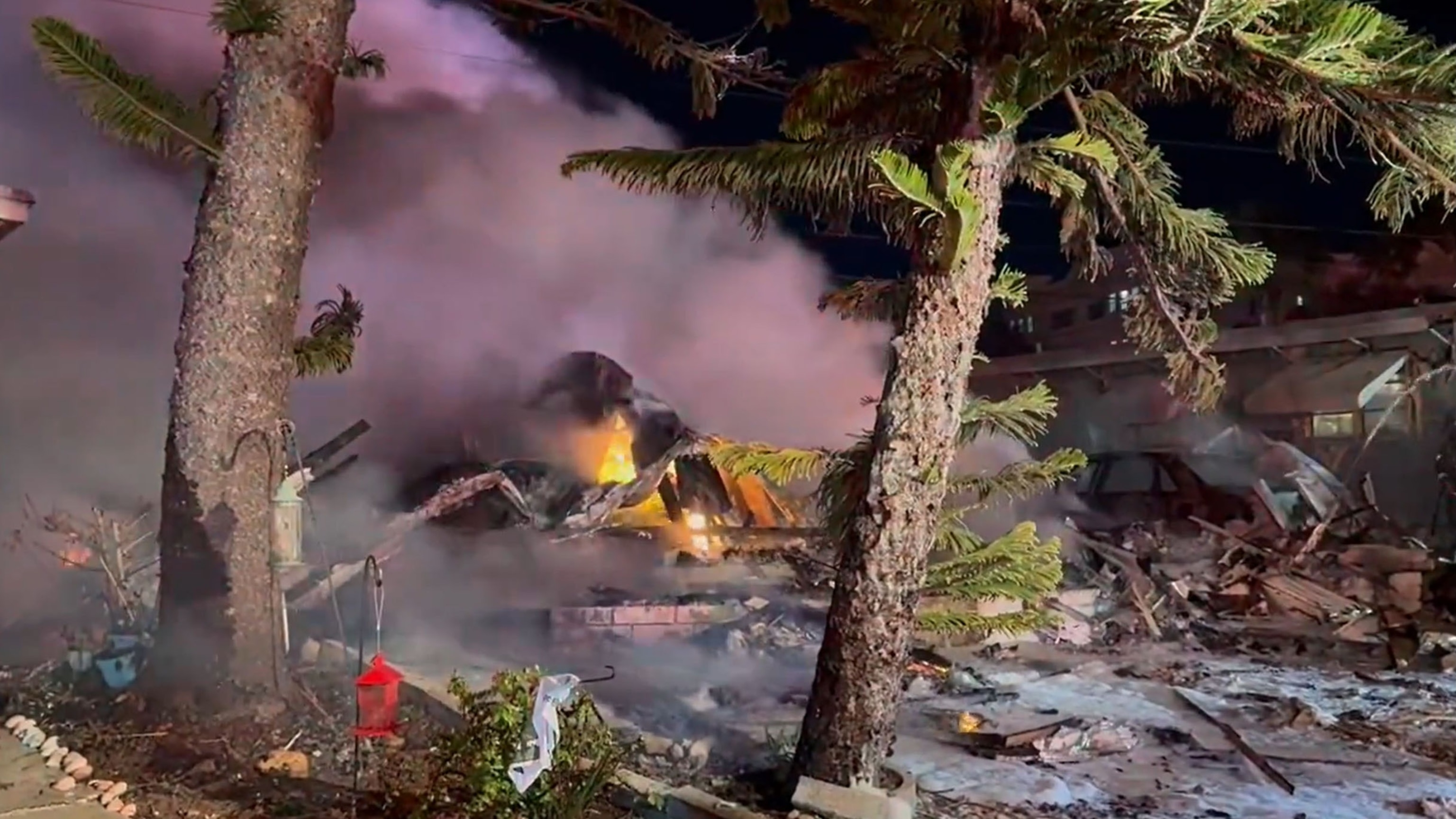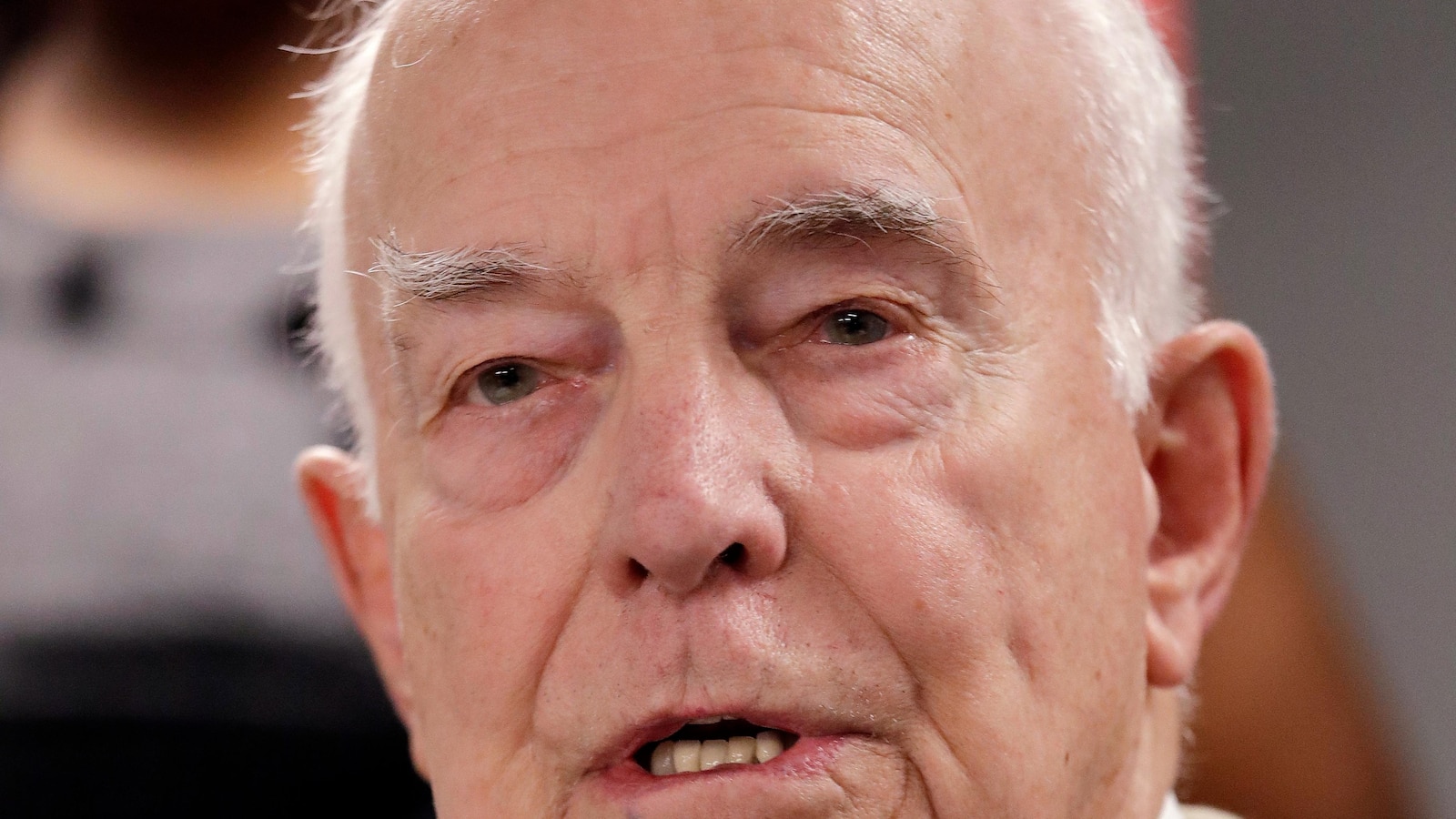New details have emerged in the February small plane crash at a Clearwater, Florida, mobile home park that left three dead.
According to the preliminary report from the National Transportation Safety Board released on Tuesday, two people at Clearwater Air Park told the FAA that the pilot of the Beech 35 plane said he could not find the airport. He “asked them to turn on the runway lights, which were already on from an airplane that had just landed,” the report said.
The pilot, Jemin Patel, 54, of Melbourne Beach, asked air traffic control in another communication to turn the runway lights on, the report said. Although the air traffic controllers changed the lighting to its “highest intensity,” per the report, the pilot was unable to locate the airport.

A small plane crashed into a mobile home park in Clearwater, Florida, on Feb. 1, 2024.
Clearwater Fire & Rescue Department
The pilot then announced he had a “fire,” the officials said, according to the NTSB preliminary report. A few minutes later, he said he was going to Albert Whitted airport since he couldn’t find CLW, the report said.
The Clearwater air traffic control asked the pilot to turn 180 degrees and maintain his altitude, but he reportedly said he was “losing engine,” according to the report. The controller asked the pilot if he could see the St. Petersburg-Clearwater International Airport, which was three miles ahead, but no further communications came through from the aircraft.
Two witnesses of the incident — a pilot, and a passenger in a car — both reported seeing a bright light before the plane crashed. The passenger described it as a “fireball,” according to the report. The nearby pilot then saw the plane crash.
As ABC News previously reported, the small plane crashed into a mobile home in Clearwater, Florida, on Feb. 1. The pilot and two people who were in one of the mobile homes hit by the plane died. Authorities later confirmed the victims from the home were Martha Perry, 86, and Mary Ellen Pender, 54. Perry lived in the home and Pender was visiting, the city previously said. Another person suffered minor injuries.
A total of four homes were engulfed in fire following the crash, but firefighters quickly doused the flames, officials said at the time.
The NTSB is continuing to review videos from commercial businesses that recorded the incident. The NTSB said wreckage from the scene was collected for further examination.
ABC News’ Clara McMichael contributed to this report.
The National Transportation Safety Board (NTSB) recently released a preliminary report on the tragic crash of a small plane into a mobile home park in Florida. The report highlighted the pilot’s inability to locate the airport as a contributing factor to the accident.
According to the NTSB report, the pilot was attempting to land at the North Palm Beach County General Aviation Airport when he became disoriented and ultimately crashed into the mobile home park. The report stated that the pilot had difficulty locating the airport due to poor visibility and unfamiliarity with the area.
This incident serves as a stark reminder of the importance of proper navigation and situational awareness for pilots. In order to safely navigate and land at an airport, pilots must be familiar with the surrounding terrain, landmarks, and navigational aids. They must also be able to effectively communicate with air traffic control and follow instructions to ensure a safe approach and landing.
In this case, the pilot’s lack of familiarity with the area and poor visibility likely played a significant role in his inability to locate the airport. It is crucial for pilots to thoroughly plan their flights, study the route, and be prepared for unexpected challenges that may arise during the journey.
The NTSB report also highlighted the need for ongoing training and proficiency checks for pilots to ensure they are equipped to handle challenging situations. Pilots must continuously hone their skills, stay current with regulations, and be prepared to make split-second decisions in high-pressure situations.
Ultimately, this tragic accident underscores the importance of thorough pre-flight planning, effective communication, and maintaining situational awareness at all times. By learning from this incident and implementing best practices for navigation and decision-making, pilots can help prevent similar accidents in the future and ensure the safety of themselves and their passengers.



